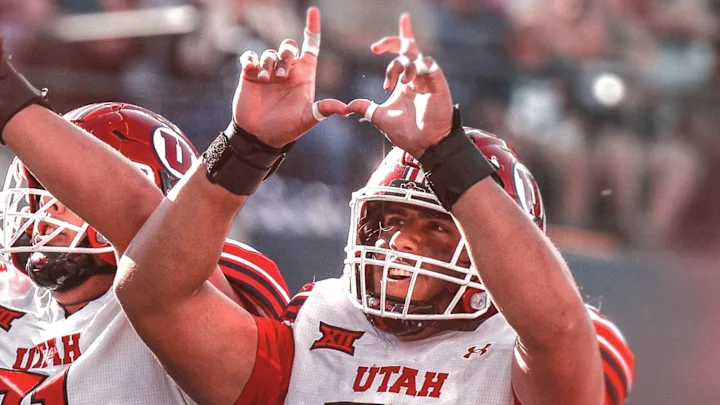Football Scholarships: What Does FBS Stand for in College Football?
Many families picture packed bleachers long before senior year, yet turning raw speed or firm tackles into tuition aid demands clear facts and patient work. While athletes shape highlight reels, tour campuses, sit exams, and polish essays, some hire a paper writing service to guard grades during the recruiting rush. The pages below explain roster limits, large-scale data, and surprise costs that often stun first-time parents. By the final line, readers will see how team numbers, grade rules, and coach calendars shape each offer, and why steady study can match a blazing forty-yard dash in real value.
College Football Structure: FBS, FCS, and Others
Television crews often place three letters on screen during autumn broadcasts. In NCAA terms, FBS spells Football Bowl Subdivision, the peak stage of college play. Programs in this tier chase bowl invites and the College Football Playoff, drawing bright spotlights and swelling crowds. One notch lower, the Football Championship Subdivision, called FCS, crowns its winner through a bracket format that rewards depth and stamina. Both groups live inside Division I, yet aid rules part ways. Current reports list one hundred thirty-three FBS teams, setting the count near one hundred thirty. About one hundred twenty-five FCS squads complete Division I, bringing total Division I football programs above two hundred fifty. Beneath them, Divisions II and III, the NAIA, and junior colleges add hundreds of rosters, each guided by distinct scholarship codes and travel needs. Knowing a school’s tier helps families judge likely playing speed, classroom balance, and the realistic money a coach may extend during senior spring.
Scholarship Categories: Full, Partial, and Hybrid
College aid appears in two broad forms. Head-count sports, including FBS football, issue only full grants. These awards cover tuition, fees, housing, meals, and books, yet supply remains tight because each roster may list only eighty-five such packages. FCS staff hold sixty-three full grants, yet they may split them into partial shares, reaching more athletes while staying under the same cost roof. Division II coaches handle thirty-six equivalency scholarships, so the typical Division II award blends with merit aid to meet full charges. Division III groups and Ivy League campuses may not hand out athletic dollars; they still deliver strong merit and need-based support that can rival many athletic plans. Junior college packages vary by state rules and private funding, yet they often include tuition and books, giving late bloomers space to grow. A preferred walk-on slot includes no cash today but can lead to future help or a clear path to the depth chart. Learning each label arms families with honest expectations and shields them from harsh signing-day shocks.
Supply, Demand, and Probability
Numbers reveal the squeeze better than any pep talk. Nationwide, close to one million ninety thousand teens suit up for high-school football each year, lacing shoes on fields from Maine to Hawaii. About seventy-three thousand reach college rosters across all tiers, trimming the pool by more than ninety-five percent. Fold scholarship ceilings into that figure, and the odds shrink again. With eighty-five grants in each of one hundred thirty-three FBS programs, coaches oversee about eleven thousand three hundred full rides total. Stretch that stock across five eligibility seasons, and only a slice opens in any given recruiting cycle. Many FBS teams also carry more than one hundred athletes, meaning not every jersey carries money. FCS, Division II, and NAIA bodies must stretch smaller aid totals over even larger rosters, spreading dollars thinner. Accepting these ratios steers families toward backup plans, firm grades, and a steady, long view of the journey.
Eligibility: Courses, Tests, and Clearance
Raw talent alone never seals an offer. The NCAA Eligibility Center reviews transcripts and test scores before clearing any newcomer for practice. Each recruit must finish sixteen core high-school classes, pair grade-point averages with sliding SAT or ACT marks, and collect a diploma on schedule. Division I sets the floor at a 2.3 core GPA, while Division II allows a 2.2. Standardized exams now follow a score-flex model that links test marks with higher GPAs, yet solid classroom work still weighs most. Guidance sites such as the NCSA scholarship search steer families through forms and due dates. Coaches also scan discipline logs and social feeds, since online posts can raise bright flags or dark alerts. Because status can rise or fall with a single report card, most programs supply study halls and tutors from week one on campus. Matching classroom drive with field effort keeps doors wide open.
Recruiting Road: Film to Division I Offers
Recruiting starts sooner than many parents expect. College staff flag talent in ninth or tenth grade through regional camps, school visits, and online clips. Crisp video acts as the entry token, so athletes should capture varsity plays that reveal burst, footwork, and grit. Coaches value versatility, so footage should include special-teams snaps, pursuit angles, and cerebral plays such as quick audibles. Once interest sparks, dialogue builds through social media, direct calls, and campus tours. June 15, after sophomore year, marks the first day Division I coaches may phone prospects. That date triggers a rush of messages, junior-day invites, and summer camp notes. Staff grant Division I offers only after reading grade reports, medical charts, and character files. Each offer lists a firm answer window, so quick yet careful replies display maturity. Families should build a simple sheet to log every chat, trip date, and roster hint, then update it weekly.
Senior fall brings official visits, where athletes spend two nights on campus, meet professors, and tour athletic centers. The coaching staff covers travel and lodging within set limits, yet recruits still need pocket cash for snacks and souvenirs. During these visits, parents must watch practice pace, training-room care, and body language cues between veterans and staff. An honest gut check during a late-night ride to the airport can save four years of regret. Early signing periods in December let many prospects lock their spot before the holiday break. Those who seek more time can wait until the regular signing day in February, although spots shrink fast once linemen ink letters in winter.
Reading Hidden Costs
Even a full ride seldom removes every expense. Application fees, parking permits, and semester start-up costs slide outside many aid packages. Summer credit hours, winter housing, and bridge meals on closed-hall weekends also add quiet fees. Flights home during breaks weigh heavily on families who live far from campus, especially when bowl travel burns winter funds. Before signing, parents should ask for a cost-of-attendance sheet that lists each recurring charge. Housing choice also matters; some grants cover only standard rooms, leaving any deluxe suite bill to the family. Health coverage and meal plans vary by campus; athletic departments often add a training-table swipe card that pairs with general dining dollars, yet that perk differs by league. Comparing award letters works best with a neat spreadsheet that tracks net price once every detail is in place. When aid appears light, polite follow-ups may unlock need-based grants, Pell dollars, or academic bonuses that close gaps. Coaches answer to strict caps and cannot pledge cash they lack, so frank talks early prevent tension later.
Options Beyond Division I
Division II, Division III, NAIA, and junior colleges all deliver strong football and solid degrees while easing the odds chart. Division II staffs stretch thirty-six equivalency grants across rosters that often top ninety names, so each athlete blends athletic aid with merit packages, state funds, and federal need grants. Division III and Ivy League squads skip athletic money yet post high graduation numbers and robust campus job programs that lighten bills. Junior colleges give late bloomers a place to sharpen skills, boost grades, and mature physically before moving up; many FBS staff watch these fields closely and hand mid-year offers to breakout stars. NAIA campuses, managed outside NCAA rules, allow twenty-four equivalency scholarships and flexible age guidelines, helping older students or service veterans find new ground. Checking each level widens choices and may supply a better academic, athletic, and social fit than the first dream on a grade-school poster.
Steps and Reminders
A clear plan turns an aim into reality. First, confirm eligibility through core work, steady grades, and the NCAA portal. Second, build a sharp highlight reel that opens with the best plays and labels each clip with the game date and opponent. Third, share that file with realistic targets rather than only national powerhouses, then track each reply in a sheet to dodge missed calls or duplicate notes. Fourth, visit campuses to gauge coach style, weight-room culture, and tutor support, then write reflections while memories stay fresh. Fifth, line up award letters side by side, placing hidden costs beside each dollar figure for fast review. Sixth, review health coverage, meal stamps, and summer class plans to avoid off-season shocks. Finally, pair every workout with steady study; classroom grants never lose playing time, and college careers end faster than student transcripts.
By grasping the meaning of FBS, the count of scholarships, and the tight coach calendars that guide each offer, families step beyond guesswork. Patience, daily effort, and open talk often separate scholarship winners from near misses. Keep training smart, study hard during bus rides, and answer every call within one day. The long process demands grit, yet the payoff on signing day proves worth each early alarm and late-night writing sprint.




